Background and Objective
The tourism sector has a large impact on job creation and a major ripple impact on the economy in Egypt, and is one of the four largest sources of foreign income for the country, along with petroleum exports, Suez Canal revenues and remittances by nationals working abroad. The tourism industry is therefore positioned as a significant means for turning the current account deficit into a surplus. How to effectively use historical cultural properties is one of the most important challenges in the tourism sector for the Government of Egypt. Although modern museums have been constructed in cities such as Alexandria and Luxor, the Egyptian Museum which preserves and exhibits the country's most important historical cultural properties needs maintenance and improvement in its buildings and facilities since operations began more than a century ago (the current location opened in 1902).
This project aims at constructing a new museum "the Grand Egyptian Museum (GEM)" in Giza area (15 kilometers southwest of Cairo), adjacent to the Pyramids, to strengthen the preservation and restoration of historical cultural properties, as well as boosting other functions such as the exhibition and research of such properties and educational activities. It is expected to exhibit more than 50,000 artifacts including all the famous King Tutankhamun's treasures including the golden mask. This would thereby contribute to the development of the tourism industry and create employment opportunities in Egypt, and in turn contribute to socioeconomic development.
The new museum will be one of the main and most important symbols of the Egyptian-Japanese long history of cooperation. JICA is financing the construction of the GEM through two ODA loans of a total around $ 800 million. Additionally, JICA is providing technical cooperation in relation to (1) conservation, restoration, packing and transportation of artifacts at the GEM Conservation Center (GEM-CC), (2) management and operation of the museum and exhibitions, in order to support the preparation for the museum's opening, (3) excavation of the second Khufu Ship (also known as the Solar Boat) in the Pyramids area, which is expected to become one of the key attractions of the GEM.
Project Summary
[Loan Projects]
JICA has provided two ODA loans in 2008 and 2016 respectively, of a total of 84.2 billion Japanese Yen (around $800 million) allocated to the museum construction, exhibition construction, information and communications infrastructure and consulting services (including construction supervision and procurement assistance).
[Technical Cooperation Projects]
1. Technical Cooperation to the Grand Egyptian Museum Conservation Center (GEM-CC)
GEM's collection is expected to reach fifty thousand artifacts on display in addition to the stored objects for the purpose of study and research. The artifacts are currently being transferred to the Grand Egyptian Museum Conservation Center (hereinafter referred to as GEM-CC) which was established in June 2010.
The ultimate goal of the GEM-CC is to become a global center of advanced conservation and research in the field of Egyptology and archeology according to the internationally recognizable standards in terms of both theory and practice. The GEM-CC is playing an important role in the conservation and restoration of the artifacts of GEM and other artifacts from all over Egypt to prepare them for display, as well as developing the capacities of the conservators from all around Egypt and, hopefully in the near future, from the Middle East and North African Countries.
First Phase: (June 2008 – June 2011) "Preparatory Phase"
This phase focused on the following two components:
1- Supporting Artifacts Database Development (ADD)
The ADD is a project team of Egyptians that was formed by JICA, which has developed the most appropriate system and procedures for database creation by restructuring and upgrading the database that existed before with more accurate and detailed data of artifacts and also developed the institutional and human resources capacities among the Egyptian Egyptologists working at GEM-CC that contributed to more efficient and effective operations.
2- Capacity Building of Conservators
In cooperation with the National Research Institute for Cultural Properties in Tokyo, JICA organized various training workshops program on conservation in both Egypt and Japan.
Second Phase: (July 2011 – March 2016) "Training Phase"
In the second phase of the project which started in July 2011, more comprehensive and full-scale training programs were provided to the Egyptian conservators by Japanese experts aiming at enhancing the knowledge and skills of conservation practice, as well as supporting GEM-CC to become an international leading institute of conservation practice and research in the region. More than 100 trainings were conducted in the fields of conservation with 2,250 participants.
Third Phase: (November 2016 – Present) "Joint Conservation Phase"
GEM and JICA advanced their cooperation into a joint conservation project, where Egyptian and Japanese experts are working together on the conservation, restoration, packing and transportation of the 72 target artifacts that were jointly selected to be displayed at GEM. These 72 artifacts include artifacts different materials such as wood, textile, mural paintings, and stones. The artifacts include King Tut's golden bed, chariots, as well as his tunic, gloves, socks, and clothes.
*For more information, please visit the website of JICA-GEM (Joint Conservation Project):
2. Capacity Development Project for Management and Exhibition of GEM (GEM-CD) (April 2016 – Present)
JICA is also working together with the Ministry of Antiquities and GEM to develop a sustainable management and operation system of GEM through capacity development of the GEM management staffs. The project includes capacity development in the fields of museum management, museum exhibition, ICT, education and transportation.
3. Excavation and Conservation of the Second Khufu Boat (December 2013 – Present)
Through the cooperation with the Institute of the Solar Boat in Tokyo, JICA is supporting the excavation, conservation, measuring and scanning of the Second Khufu Boat, known as the Second Solar Boat, which is expected to be one of the highlighted objects of the GEM. Discovered in 1987 by the Japanese archeology team led by Prof. Sakuji Yoshimura, the Second Khufu Boat is currently in the process of excavation and conservation to be ready for its display at the GEM.
*For more information, please visit the website of the Institute of the Solar Boat:
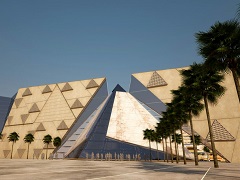
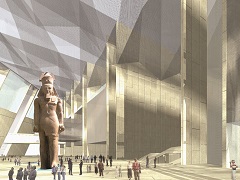
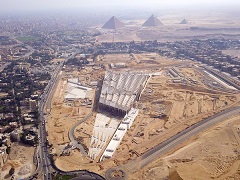
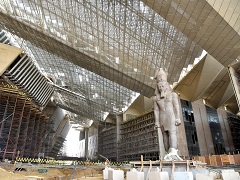
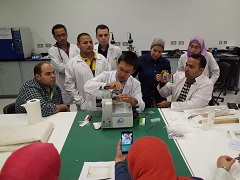

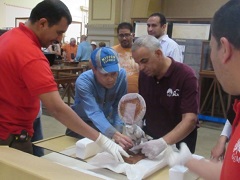
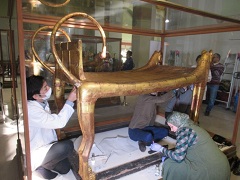
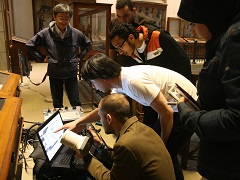
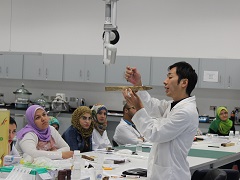
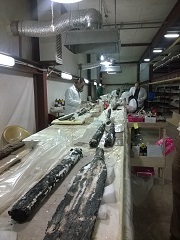






scroll